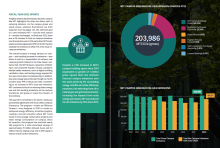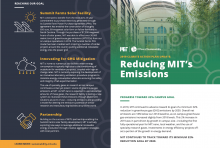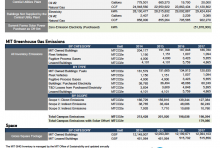A two-page information resource on progress towards MIT's Greenhouse Gas Goal in 2023.
MIT's Greenhouse Gas Inventory
Each year, MIT measures the greenhouse gas emissions associated with the operation of our campus to better understand our direct contribution to the heat-trapping gases in the atmosphere – the gases contributing to global climate change. This basis has long informed our carbon reduction strategies and allows for tracking progress over time.
MIT Greenhouse Gas Emissions
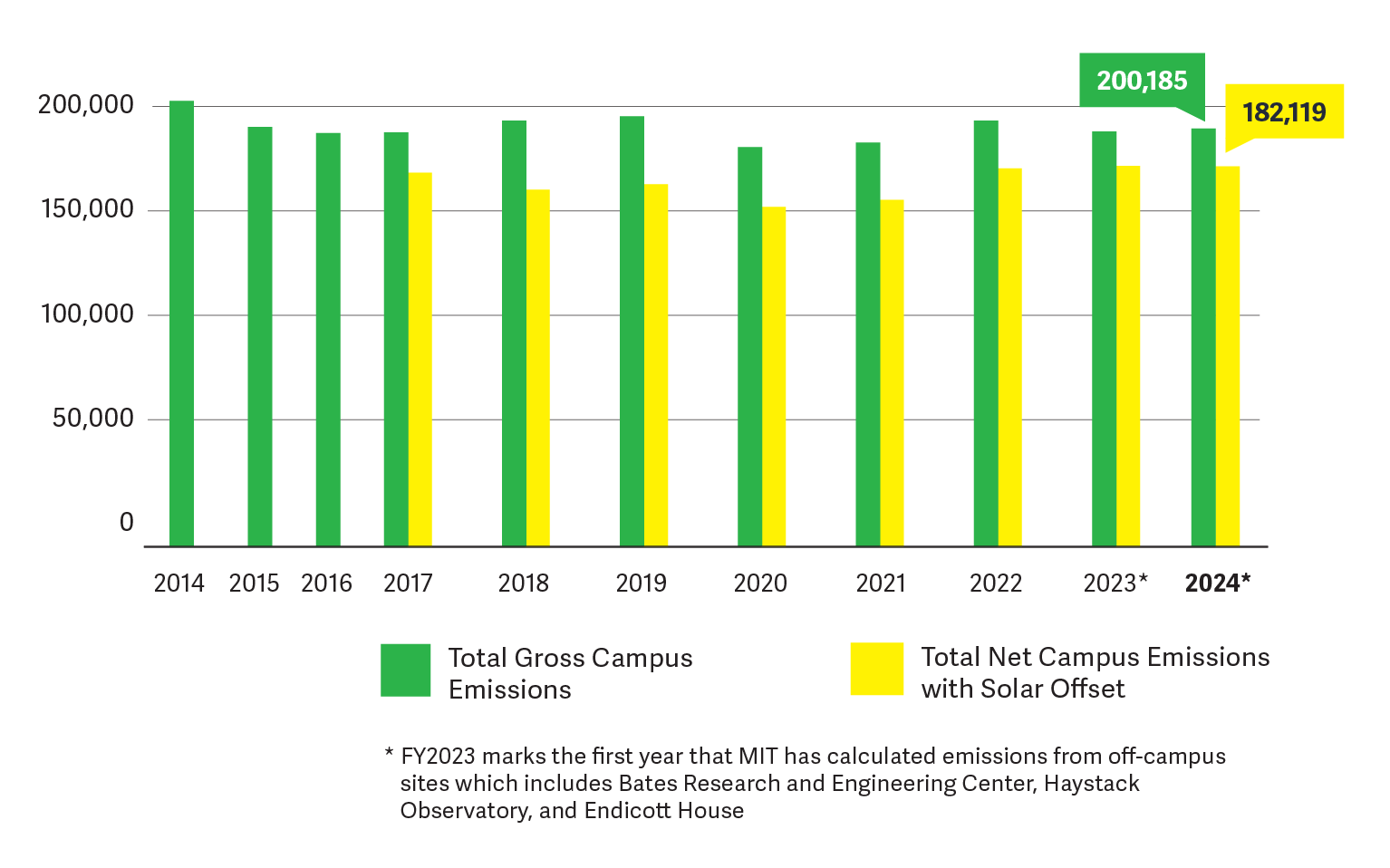
Summary – Fiscal Year 2024
In fiscal year 2024, MIT reduced its total building-related on-campus emissions by 3 percent from the previous year, even after the addition of the new Schwarzman College of Computing and Tina and Hamid Moghadam Building. This reduction in emissions is largely attributed to energy efficiency projects targeting multiple campus buildings.
MIT’s Summit Farms solar power purchase agreement (PPA) enabled the Institute to offset 9 percent of its total on-campus emissions in fiscal year 2024. Including all sources of campus emissions and the impact ofthe PPA, MIT’s emissions in 2024 were 15 percent below the total 2014 baseline, despite significant growth in campus facilities, including MIT.nano and many others.
More about MIT’s greenhouse gas inventory
The current inventory includes emissions associated with three primary sources: owned and leased buildings, specialty research and process gases, and campus vehicles. In May 2021 MIT released its latest climate action plan, Fast Forward: MIT’s Climate Action Plan for the Decade, outlining the ambitious goals to achieve net-zero campus carbon emissions by 2026 and eliminate all direct emissions by 2050.
Scope 3 Emissions
In 2019, the MIT Office of Sustainability (MITOS) expanded upon a multi-year effort to build a preliminary picture of the Institute’s Scope 3, or indirect, GHG emissions. This is done to inform MIT’s total greenhouse gas emissions activities (Scopes 1 + 2 + 3) and explore where strategic opportunities may exist to reduce emissions beyond what MIT is currently tracking. This effort is developing additional emissions data associated with MIT’s purchased goods and services, MIT-sponsored travel, commuting, and capital goods (furniture, fixtures, tools, etc.) using the WRI & WBCSD GHG Protocol for Scope 3 framework.
The role of Summit Farms solar power purchase
Summit Farms Solar LLC is a solar photovoltaic facility in Currituck County North Carolina, operated by Dominion Energy. MIT has contracted through a long-term power purchase agreement for the purchase of 73% of the electricity produced. MIT has chosen to retire the renewable energy credits associated with the purchase.
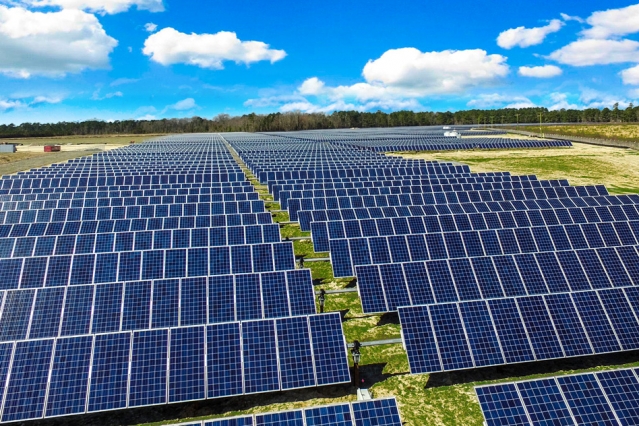
The offsets produced by Summit Farms’ clean, emissions-free power are clear and tangible. The solar facility displaces more carbon-intensive sources of energy, in a region where forty percent of its power is generated from coal. In addition to displacing power, the solar farm has helped to facilitate the early retirement of a large coal-fired plant nearby, by providing substitute power to make up for the coal plant’s contractual peak-power delivery obligations. The owners of the coal plant are paying the purchasing partners (that include MIT) to provide substitute capacity as they come offline, making it economically feasible for the coal plant to retire ahead of schedule.

A two-page information resource on progress towards MIT's Greenhouse Gas Goal in 2021.

Energize_MIT is an open energy data tracking tool supporting operational decision-making and research.




